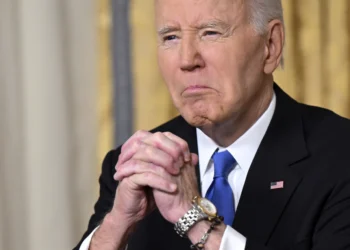Whether it was Twain or Bismarck or some lesser light who first compared lawmaking to sausage-making is unclear, but if you’re rooting, as I am, for Donald Trump’s One Big Beautiful Bill™ to wind its way through Congress and onto the Resolute desk for his signature, you might not want to see how it got there.
“This is one big ugly bill that House Republicans are trying to jam down the throats of the American people under the cover of darkness,” said a remarkably unironic House Minority Leader Hakeem Jeffries on the House floor just after 6 a.m. last Thursday and just before the bill squeaked by on a 215-214 vote. Clearly, Jeffries has forgotten which political party is famous for force-feeding the American people such legislative abominations as the Affordable [sic] Care Act, the American Rescue [sic] Plan, the Infrastructure [sic] Investment and Jobs [sic] Act, and the Inflation Reduction [sic] Act.
As for Trump’s 1,116-page bill — which I daresay no one has fully read — it now heads to the Republican-controlled Senate, where it’ll be picked apart and put back together for much of the summer. The bill includes some $5 trillion in tax cuts, some of which is offset by tax-code changes and spending cuts, such as a phasing out of Joe Biden’s “clean energy” tax credits and an $800 billion haircut to the bloated and grotesquely fraud-infected healthcare program known as Medicaid. Another hurdle involves Republican lawmakers who hail from high-tax blue states. As the AP reports: “Lawmakers from New York, California and other high-tax states say the boost for state and local tax deductions, called SALT, is insufficient. As proposed, it rises from $10,000 to $30,000 for joint filers making less than $400,000 per year. They are pushing for more.”
Trump has expressed a desire to have the bill passed by July 4, but that’s probably wishful thinking. Remember: The Senate is the World’s Greatest Deliberative Body.
More pressing is a deadline later in the summer, when the government will run headlong into its borrowing limit and will once again have to extend the debt ceiling, likely by another $4 trillion. But, hey, what’s another few trillion amongst debt-ridden friends, right?
First and foremost, failure is not an option. This bill, after all, is Donald Trump’s agenda. If House Speaker Mike Johnson and Senate Majority Leader John Thune can’t deliver their respective majorities and pass the bill through their chambers, then they will have failed not only Donald Trump but every American citizen who voted for Trump last November. Put bluntly, if Trump loses this battle, his agenda will be derailed; he may well lose the House in the 2026 midterms. If that happens, he’ll likely break his record for phony impeachments. In any case, though, if he loses, he’ll be irreparably weakened as president.
Speaker Johnson “has pleaded for senators to revise the bill as little as possible, but Trump said Sunday that he expected the Senate to make ‘fairly significant’ changes,” The Washington Post reports. “Thune will need to rework it to reflect Senate Republicans’ concerns and include their priorities — without tearing it up so much that it can’t pass the House again once it clears the Senate.”
If you’re a fiscal conservative, as we in our humble shop are, you’ve likely been reaching for the Maalox a lot lately. Here, political analyst Veronique de Rugy has a suggestion: “The Senate now has a chance to get it right,” she notes. “In doing so it should focus on two things: The deficit impact remains too high,” and “the long-term economic growth focus is too weak.”
Whether the Senate can focus on these important matters while still retaining a bill that can come back to the House in one piece is anybody’s guess. But, again, sausage-making is an ugly process. And failure is not an option.

















